
Many climate campaigners feel that the federal government must act to implement widespread climate policy strategies that will reduce emissions across the board, as well as provide a framework for progress and development.
Ultimately though, federal legislation takes time that we don’t necessarily have. The climate emergency is happening now - so it's up to individual states to decide how aggressively they want to address climate change.
States can pass legislation such as carbon taxes or renewable energy portfolio standards, or even create their own cap-and-trade programs. Additionally, local and state governments can incentivize businesses with clean energy programs and grants that promote research into green energy solutions.
To achieve changes in climate legislation requires lobbying from local environmental groups, which can be formed by organizations, individuals, or a combination.
One notable example of this was the Maryland Climate Coalition.
In this case study, we examine
Note - the majority of the information in this article was originally published on marylandclimatecoalition.org. Editorial commentary has been added, and updates have been made for grammar, relevance, and factual correctness in 2024
The Maryland Climate Coalition brought together environmental, faith, health, labor, and civic organizations to advance clean energy and climate policies in Maryland.
In the fall of 2010, a small cadre of environmental organizations began the Wind Works for Maryland collaboration to bring offshore wind energy to Maryland.
The offshore wind campaign illustrated a bold vision for Maryland's cleaner and healthier energy future, inspiring and energizing thousands of citizens from across the state. It also captured the national spotlight as hundreds of environmental, health, labor, business, faith, and student groups, and thousands of ordinary Marylander voters joined together to push lawmakers in Annapolis to make offshore wind power a reality in Maryland.
In 2013 the Maryland General Assembly passed the Maryland Offshore Wind Energy Act [1] and Governor O’Malley signed it into law.
The offshore wind campaign galvanized and united the organizations involved, leading to the formation of the Maryland Climate Coalition.
This coalition grew to sixteen members who leveraged their combined policy expertise and grassroots organizing strength to maintain Maryland’s leadership position as a climate and clean energy leader.
Comprised of national, regional, state, and local advocacy organizations, they were committed to advancing policies that reduce greenhouse gas emissions.
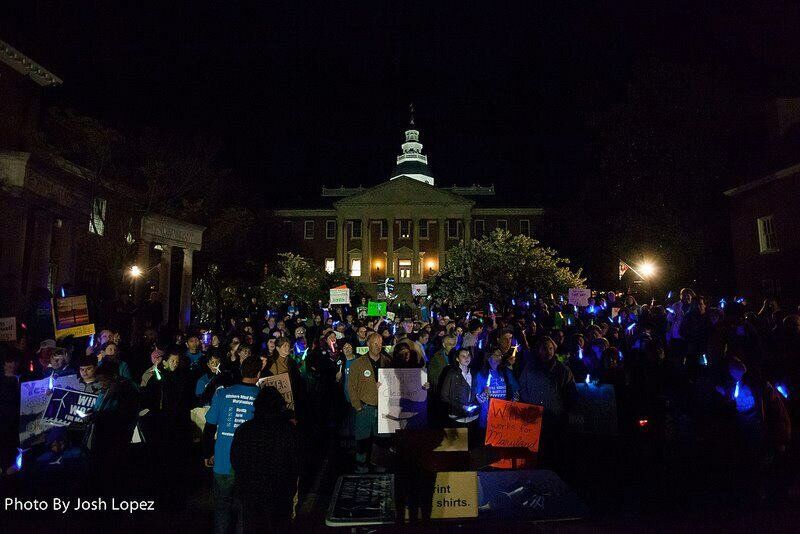
400 supporters holding glowing mini-wind turbines outside the statehouse at a Maryland Climate Coalition rally in 2012. Offshore wind supporters then circled the statehouse to show support for offshore wind.
The stated mission of the Maryland Climate Coalition was to unite Marylanders to mitigate climate change and protect their environment, health, and economy.
The Coalition worked with a broad range of partners engaging in policy advocacy, grassroots organizing, and public education.
The major campaigns undertaken by the Maryland Climate Coalition are set out below. These are preserved from the original campaign pages of the coalition’s website, showing the coalition’s goals and how they set out to achieve them.
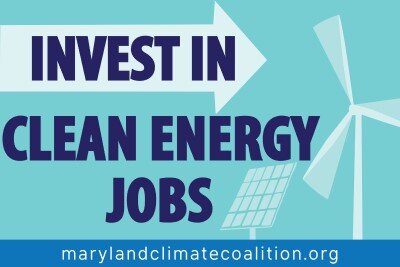
Using dirty energy from fossil fuels for our electricity needs contributes to climate change, hinders our economy and harms the health of Marylanders – especially vulnerable populations such as the elderly, children, and low-income communities, especially communities of color.
That’s why the Maryland Climate Coalition has launched a new campaign to require that 50 percent of Maryland’s electricity come from renewable sources by 2030.
50% renewable energy is an important, reachable objective and a critical stepping stone to achieving 100% clean energy in Maryland.
The Climate Coalition supports theInvestinCleanEnergy.MDClimateCo passage of legislation in 2018 that calls for:
We must also continue to do the necessary work now to determine what path leads us forward, to a Maryland with a 100% clean energy future.
As the federal government moves backwards on climate, Maryland must continue forward, leading the way on renewable energy to protect our communities and the environment. Maryland should double our use of renewable energy, so we can save lives and transform our energy sector away from harmful fossil fuels and toward a clean energy economy.
Clean energy can also be used to power urban transport solutions, replacing fossil fuels entirely. Electric cars, other vehicles, and eco-friendly e-bikes that are charged using clean energy can then be said to be entirely zero-emission!
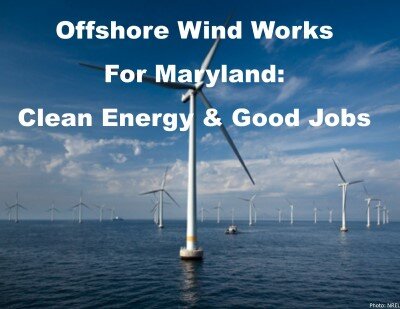
The wind blowing off Maryland’s Atlantic coast is a vast, untapped energy source and offshore wind has the power to provide clean energy, create family-supporting jobs, reduce pollution, and help future generations from the dangerous impacts of climate change.
In 2013, with the passage of the Maryland Offshore Wind Act, Maryland put the building blocks in place for offshore wind development. Now Maryland is on its way to harnessing the power of offshore wind to build a modern clean energy economy.
The 2013 legislation provided safeguards for ratepayers, incentivizes the construction of a 248 megawatt wind farm, requires electricity suppliers to purchase Offshore Wind Renewable Energy Credits (OREC), and carves out up to 2.5% of the state’s energy supply for offshore wind energy, creating a demand for the new clean energy source. The legislation also includes provisions for Maryland’s small businesses, including minority-owned businesses, to ensure that they are ready to participate in the offshore wind supply chain.
The Public Service Commission (PSC) granted Skipjack Offshore Energy and U.S. Wind offshore wind renewable energy credits (ORECs) today enabling them to move forward with their proposals to build 368 megawatts of offshore wind, located off the coast of Ocean City and and Delaware, and creating 9,700 jobs in the process. The approval of these projects puts Maryland in the running for the nation’s largest offshore wind farms.
Harnessing the power of offshore wind will build a modern clean energy economy with thousands of skilled, family-supporting jobs.
Manufacturing turbines and the associated equipment like foundations, sub-stations, and new transmission lines will create jobs. New jobs to construct, maintain and operate an offshore wind energy farm will be created, as well as the installation of home wind turbines for homes in suitable areas.. In addition, the offshore wind industry will utilize and further invest in the infrastructure and skilled workforce of the Port of Baltimore and the Lower Eastern Shore.
While Europe has over 80 offshore wind projects producing over 11,000 megawatts of clean energy, the burgeoning U.S. wind energy industry is just beginning to develop this tremendous untapped offshore wind resource. This presents an opportunity for Maryland to put our businesses and our workers at the forefront of this imminent American industry.
Maryland offers a central location in the Mid-Atlantic and is ideal to be the central hub for supporting other Atlantic offshore wind projects. If Maryland is the first state in the U.S. to move forward with a large wind farm, other future Atlantic offshore wind projects will also utilize Maryland’s infrastructure and workforce skills to meet operational needs for the industry that don’t yet exist in the U.S.
In Europe, Denmark was the first country to develop offshore wind. In doing so it developed offshore wind expertise and infrastructure, and as a result, has become the hub for all offshore wind projects in Europe. Maryland has an opportunity to become a leader on offshore wind in the U.S. The federal government has leased over 1 million acres of offshore wind area on the East Coast, including Maryland’s 80,000 acres.
Maryland is poised to be a leader in offshore wind in the U.S., but it is important that we move forward with offshore wind now in order to gain that position. If the Public Service Commission approves an offshore wind project Maryland will be the first state in the U.S. moving forward with a large wind farm. However, other states are not far behind Maryland in offshore wind development. Maryland must move first to seize this opportunity.
Using more clean, renewable energy means cleaner air and water for Marylanders. Dirty energy from the burning of fossil fuels is one of the main reasons that 75% of Marylanders live in areas that received a D or F air quality grade from the American Lung Association in 2015.
According to a recent report by Synapse Energy Economics, a 200MW offshore wind farm in Maryland would result in $75 million in benefits from avoided mortality due to reduced SO2 and NOx emissions, as well as the climate benefits from reduced carbon pollution.
Offshore wind development off Maryland’s coast will also help to bring long-term electric price stability to Maryland customers. Diversifying the east coast’s energy mix is critical for protecting customers from price spikes in the volatile fossil fuel markets. Offshore wind provides steady, reliable, and strong wind resources with no fuel costs. Through the Offshore Wind Renewable Energy Credit, Maryland will lock in stable electric rates for twenty years. A Maryland offshore wind project will also reduce costs to customers by providing electric congestion relief on the Delmarva Peninsula.
Offshore wind also provides steady, reliable, and strong wind resources presenting a massive, local clean power opportunity. It is a key part of transitioning our nation off of dirty energy sources like coal and natural gas and towards a clean energy future. Offshore wind produces the most energy when we need it the most – during hot summer days and cold winters. Today, utilities must use the dirtiest and costliest sources of power to supply those periods of peak demand.
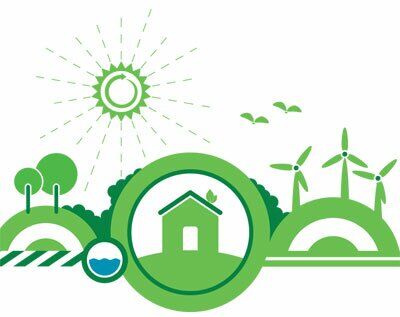
Energy efficiency means using less energy to provide the same service.
Every home, office, factory, and public building can cut energy waste by installing advanced lighting, heating and cooling systems, and energy-efficient appliances.
Ensuring that buildings hold warm or cool air longer by sealing any gaps where air is lost and adding insulation, using more energy-efficient appliances and technologies, and improving lighting are all ways to improve energy efficiency.
Saving energy is our cheapest and easiest option to keep electricity costs low, making it the least-cost energy resource we have. Many of our buildings were constructed before advanced energy building codes, so there are significant energy savings to be gained through energy efficiency updates.
Maryland ratepayers have benefited from a robust portfolio of energy efficiency programs since the passage of the EmPOWER Act in 2008, saving consumers over $4 billion on their energy bills and over 5 million megawatt hours (MWh).
Over 40% of Maryland’s electricity still comes from coal-burning power plants that emit mercury, arsenic, and lead. By reducing our consumption of energy through efficiency improvements, we’ll have a healthier Maryland.
Energy efficiency creates jobs and small businesses that weatherize buildings, manufacture components, sell efficient products and construct new buildings. Energy-efficient buildings are more comfortable and have a higher resale value.
The Maryland Efficiency First Coalition, a coalition of home performance businesses, estimates that EmPower Maryland supports over 1,500 private sector jobs in the Home Improvement industry alone.
In June of 2015 Maryland’s Public Service Commission issued an order extending the state’s successful EmPOWER Maryland programs that requires the state’s utilities to achieve annual energy savings through their energy efficiency programs ramping up to 2% incremental savings per year.
Maryland is now a national leader on energy efficiency, on par with nation-leading states like Massachusetts, California, and Vermont.
Maryland should continue its progress with this popular program and work towards the annual electric energy efficiency goal of 2% savings rate in retail electricity sales.
The MCC repeatedly campaigned for the Greenhouse Gas Reduction Act of 2009 which directed the state to reduce climate pollution by 25 percent by 2020, and led to the creation of Maryland’s wide-ranging Greenhouse Gas Reduction Plan, which includes more than 150 programs.
As you will see later in the Achievements section, this was passed and signed into law by Governor Hogan in 2016.
Over the course of its campaign operations, the Coalition published various research, data, and fact sheets which assisted in promoting and informing the public and legislators of its stated aims.
The Maryland Statewide Registered Voter Poll surveyed Maryland registered voters to measure attitudes. A total of 594 voters responded to the survey, which was conducted between February 19 and 26, 2016.
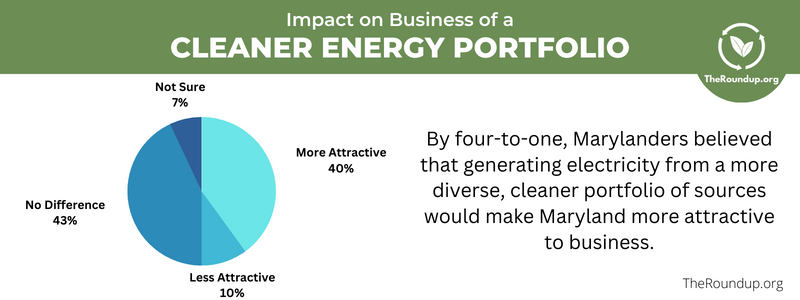
This poll demonstrated that Maryland voters placed a very high priority on clean energy. Voters wanted the State of Maryland actively involved through policies and incentives to move Maryland more quickly towards renewable energy sources.
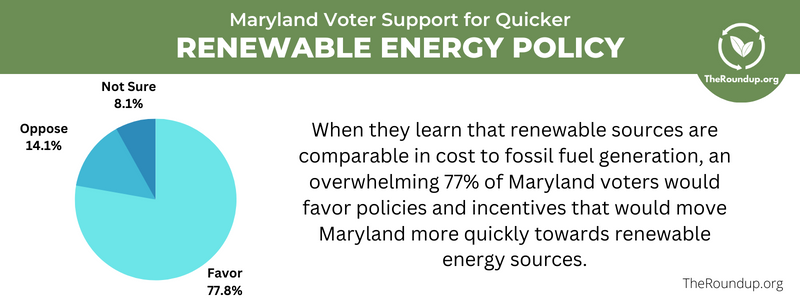
OpinionWorks LLC of Annapolis, Maryland conducted this public opinion survey for the Maryland Climate Coalition. A total of 594 randomly selected registered voters statewide were interviewed by telephone from February 19-26, 2016. Both landlines and cell phones were included in the survey sample. The margin of sampling error is ±4.0% at the 95% confidence level.
The clean energy health fact sheet detailed the health costs of Maryland’s existing fossil-fuel based energy policy, and the benefits that would be derived by doubling the amount of clean energy generated by the state.
The original fact sheet can be downloaded here.
The Maryland Climate Coalition ran a number of lobbying events, which included.
The Maryland Climate Coalition is credited with being partly or wholly responsible for the passing of the following legislative acts.
In 2009 Maryland’s General Assembly passed the Greenhouse Gas Reduction Act (GGRA). This groundbreaking law requires statewide, science-based reductions in the greenhouse gases (GHG) that are changing our climate and threatening our health. In order to achieve those reductions, this law also required the creation of Maryland’s Greenhouse Gas Reduction Plan.
Maryland’s Greenhouse Gas Reduction Plan laid out state actions to achieve the required 25% reduction in GHG from 2006 levels by 2020. The law, however, needed to be reauthorized in the 2016 legislative session.
The Greenhouse Gas Reduction Act of 2009 directed the state to reduce climate pollution by 25 percent by 2020, and led to the creation of Maryland’s wide-ranging Greenhouse Gas Reduction Plan, which includes more than 150 programs. Through the plan, Maryland committed to implementing smart environmental and economic strategies, such as increasing clean energy use, helping customers save energy and money through Maryland’s EmPower program, and participating in the Regional Greenhouse Gas Initiative, a regional program that reduces carbon pollution from coal-burning power plants.
A report in October 2015 by the Maryland Department of the Environment detailed that the state was on track to meet its 25 percent by 2020 reduction goal while simultaneously supporting tens of thousands of new jobs. It estimated the benefit to the state’s economy of the current greenhouse gas reduction plan to be between $2.5 billion and $3.5 billion by 2020 and helped create and maintain between 26,000 and 33,000 new jobs.
On April 4th, Governor Hogan signed the landmark Greenhouse Gas Emissions Reduction Act of 2016 into law. The bill, SB 323/HB 610, renewed the 2009 Maryland law that sets a goal to reduce climate-polluting greenhouse gas emissions statewide by 25 percent by 2020.
The 2016 bill also further extended the goal to a 40 percent reduction by 2030, requiring long-term cuts in pollution and positioning Maryland just behind California and New York for climate goals. The law is expected to help create and maintain tens of thousands of jobs and represents a balanced, science-based approach to reducing carbon pollution.
The Clean Energy Jobs Act (SB 921/HB 1106), a bill to ensure that Maryland got 25% of its electricity from renewable energy sources like wind and solar by 2020, up from the previous goal of 20% by 2022, passed the General Assembly during the 2016 legislative session.
Unfortunately it was vetoed by Governor Hogan in May.
The coalition was disappointed in the Governor’s decision to veto this widely-supported bill that would have meant cleaner air and thousands of new, family-supporting jobs in Maryland. Luckily, the bill passed the General Assembly with veto-proof margins.
Over half of Maryland’s electricity still comes from carbon-spewing fossil fuels - coal and natural gas. Using polluting energy sources hurts our health, our economy, and our climate. 75% of Marylanders live in areas that received a D or F air quality grade for ozone pollution from the American Lung Association, and the state notoriously has some of the worst ground-level ozone pollution in the eastern U.S. As the state that is the 3rd most vulnerable in America to sea-level rise driven by climate change we need to act now to do our part to combat climate change.
Clean, renewable energy has proven itself to be a powerful driver of economic development in Maryland, including job creation. More renewable energy will give Maryland cleaner air and water and help protect its residents from the harm of fossil fuel pollution. Maryland’s General Assembly needs to vote for the Clean Energy Jobs Act this year.
That’s why the Maryland Climate Coalition worked to increase the state’s clean energy standard, called the “Renewable Portfolio Standard,” raising Maryland’ commitment to clean energy like wind and solar to 25% by 2020.
Fossil fuel combustion is a public health crisis. Chronic Obstructive Pulmonary Disease (COPD) is the 4th leading cause of death in Maryland. Air pollution from old, outdated and dirty energy is costing Marylanders’. These health burdens harm low-income people and people of color disproportionately. The National Academy of Sciences estimates that illness caused by polluting energy sources costs Maryland households an average of $73 per month. These health burdens harm low-income people and people of color disproportionately. Replacing dirty energy sources with clean energy will mean cleaner air for Marylanders.
Increasing Maryland’s clean energy standard to 25% by 2020 will significantly improve the state’s air quality while preventing 25 to 50 premature deaths per year and increase regional economic growth by $200 million to $450 million to annually due to better health outcomes.
MD solarMaryland’s solar industry includes more than 170 companies and over 3,000 jobs today. The increase in Maryland’s clean energy standard to 25% by 2020 will create thousands of jobs and boost our in-state clean energy industry.
A 25% clean energy standard is expected to create roughly 4,600 direct jobs in our region from the land-based wind industry alone – from engineers to electricians to operators. By increasing the carve-out for solar, we will also see the growth of nearly 1,000 new Maryland solar jobs per year.
The Clean Energy Jobs Act also created a working group among government agencies and clean energy stakeholders to examine the best funding opportunities to invest in job training in the clean energy industry, and to remove barriers for entry in this industry by minority- and women-owned businesses. In addition, it makes small minority- and women-owned businesses in this industry eligible to receive dedicated funding for market growth through the state’s “Strategic Energy Investment Fund.”
A 25% clean energy standard creates incentives for roughly 1,300 megawatts of new md-clean-energy-presser-p1 clean energy in our region and reduce greenhouse gas emissions by over 2.7 million metric tons per year. That’s the carbon equivalent of taking 563,000 passenger vehicles off the road every year, which will also deliver improved public health outcomes, cleaner air and cleaner water.
One of the top programs in the Greenhouse Gas Reduction Plan is increasing the amount of clean, renewable electricity—like solar and wind power—that we use to power our homes and communities.
Weather in our region is getting more intense, and our electricity grid is increasingly compromised by climate-related hazards, including more intense storms and heat waves. Dispersed and locally generated electricity that doesn’t emit greenhouse gasses is a more sustainable solution to our energy needs than our current system of centralized, polluting power plants. More clean energy will make our electricity grid more resilient and keep our lights on, even during increasingly extreme weather events.
The costs of solar and wind are plummeting and are out-competing fossil fuels on price in many parts of the country. Wind is already comparable to natural gas generation. Solar energy is getting cheaper to produce - costs have gone down 80% since 2009, and 20% in 2013 alone. Wind costs have fallen nearly 60% since 2009 and by more than 15% in 2013.
Wind and solar have more than tripled in capacity since 2008.
Maryland already has a requirement of 20% clean power by 2022. Increasing the state’s clean electricity standard to 25% by 2025 and beyond is not only critical to protecting our climate, our health, and our economy, but it’s also very achievable. Maryland has only scratched the surface of our clean energy potential. The state could meet its current electricity demand by tapping just 10% of available renewable resources.
A selection of notable press releases issued by the climate coalition.
April 6, 2018
The vote Represents A Historic First for Recognizing the Significant Environmental and Public Health Impacts of Incineration.
Annapolis — The Maryland Senate voted today to pass legislation related to Maryland’s Renewable Portfolio Standard (RPS) that eliminates a major financial incentive for polluting waste incinerators. Senate Bill 282, sponsored by Finance Committee Chair Mac Middleton (D-Charles County), extends incentives for the RPS’s “Tier 2” energy sources (currently large hydroelectric power plants) for 2 years (i.e., Tier 2 now sunsets in 2018; the legislation provides for a two-year extension, through 2020). During debate on the legislation yesterday, thirty-three of the body’s 47 senators supported an amendment by Sen. Michael Hough (R-Frederick County) that would remove waste incineration from its current status as a Tier 1 energy source, meaning waste incinerators could no longer sell renewable energy credits (RECs) to Maryland electricity suppliers. The final bill passed the body today by a vote of 37-8.
The legislation now goes to the House of Delegates, which has until Monday at midnight to pass the legislation and send it to Gov. Hogan’s desk.
Maryland’s RPS was enacted in 2004 to facilitate a gradual transition to renewable sources of energy. It operates on a two-tiered system with carve-outs for solar energy and offshore wind energy and corresponding renewable energy credits (RECs) for each tier. Electric companies (utilities) and other electricity suppliers must submit RECs equal to a percentage specified in statute each year or else pay a penalty equivalent to their shortfall. Tier 1 sources include wind, geothermal, solar, and several others.
March 16, 2018
This week a subcommittee in the House Economic Matters Committee voted down the Clean Energy Jobs Act of 2018, House Bill 1453. The Clean Energy Jobs Campaign is profoundly disappointed that these state legislators have rejected this critical proposal for climate action. This coming Monday, the Senate Finance Committee will hold a work group session on the proposal. We urge the Senate not to allow one subcommittee in the House to have the last word.
The Clean Energy Jobs Act has record numbers of cosponsors in both houses of the General Assembly. More than 660 Maryland entities endorsed increasing our state’s renewable electricity commitments to 50% by 2030, including nonprofits, labor groups, and faith organizations; businesses, as well as the Legislative Black Caucus; the Montgomery, Prince George’s and Charles County Councils; and the Baltimore City Council.
We thank our sponsors, Sen. Brian Feldman and Dels. Bill Frick and Cheryl Glenn, for their steadfast advocacy. We clearly have the support of an overwhelming majority of Marylanders.
More clean, renewable electricity – like wind and solar energy – to power our homes and businesses will benefit our health, our economy, our climate and our communities, and bring us on a pathway to achieve 100% renewable energy in Maryland. Increasing the RPS to 50% would mean 20,000 jobs in the solar industry; millions in new funding for clean energy workforce training and apprenticeships; minority, veteran, and women-owned business growth; and other potential programs to promote a sustainable economy, as well as local hiring mandates.
We urge Marylanders to contact your Senators today in support of this legislation, to take note on where your legislators stand on these issues and to make your voices heard in every way you can.
March 12, 2018
The Maryland House Economic Matters Committee voted down HB 1135 (Del. Adams), legislation that would have derailed Maryland’s offshore wind projects.
Once again, the General Assembly has affirmed its commitment to ensuring that Maryland is a clean energy leader and economic powerhouse. This vote will help ensure that these offshore wind projects years in the making can fulfill their promise to provide Maryland residents with health and climate benefits, good jobs, and more stable electricity rates.
These offshore wind projects will be a huge source of pride for our state. Maryland is open for business and ready to seize the opportunity to become the Mid-Atlantic hub for this industry.

